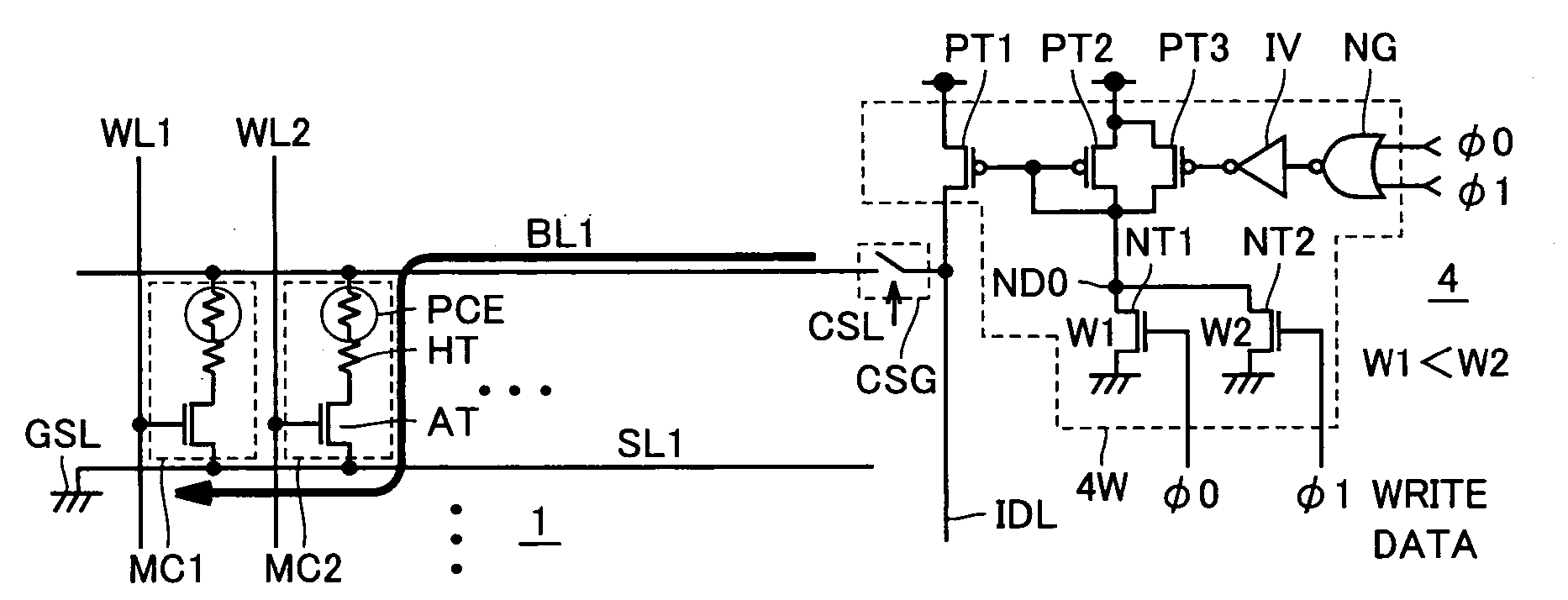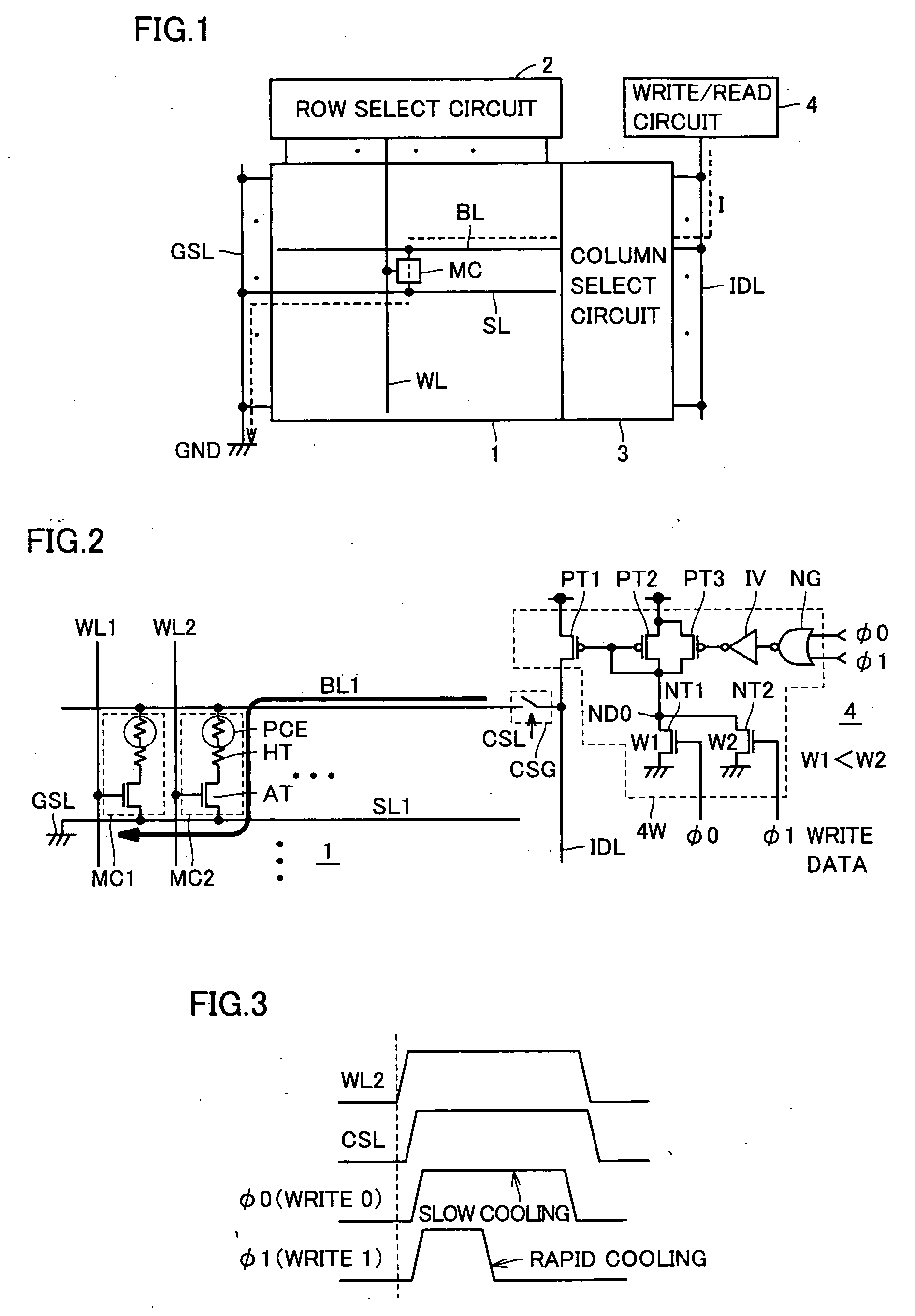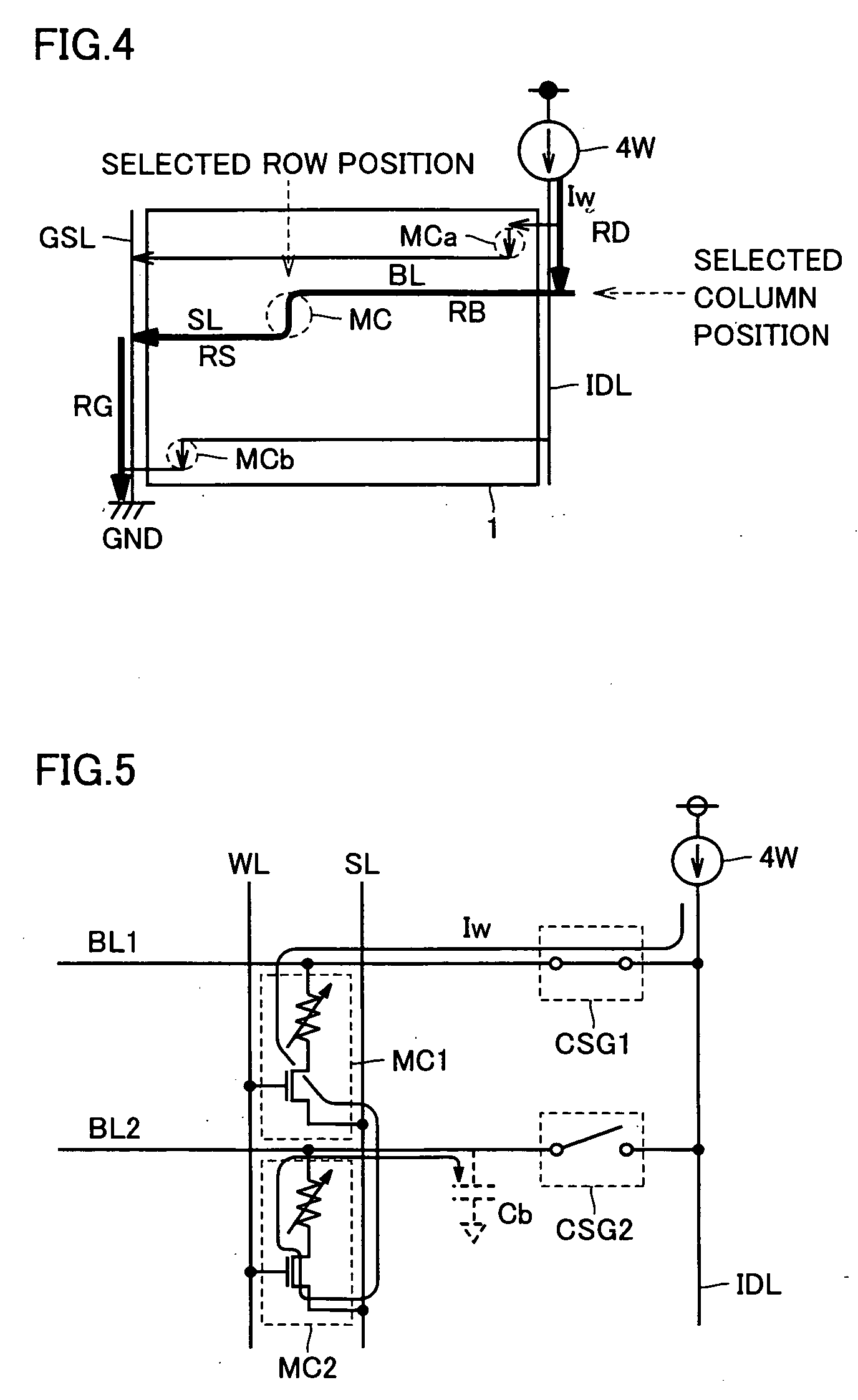Nonvolatile semiconductor memory device
a semiconductor memory and non-volatile technology, applied in information storage, static storage, digital storage, etc., can solve the problems of increased access time or occurrence of erroneous reading, inaccurate reading, and inability to quickly change the read current, etc., to achieve high reliability
- Summary
- Abstract
- Description
- Claims
- Application Information
AI Technical Summary
Benefits of technology
Problems solved by technology
Method used
Image
Examples
first embodiment
[0099]FIG. 1 schematically shows a configuration of a main portion of a nonvolatile semiconductor memory device according to a first embodiment of the invention. In FIG. 1, a nonvolatile semiconductor memory device includes a memory cell array 1 having memory cells MC arranged in rows and columns. In memory cell array 1, word lines WL are arranged corresponding to the respective rows of memory cells MC, and bit lines BL are arranged corresponding to the respective memory cell columns. Source lines SL are provided corresponding to and in parallel to bit lines BL, respectively. Source lines SL are coupled to a global source line GSL that extends along a first side of memory cell array 1 perpendicularly to bit line BL and source line SL. Global source line GSL is coupled to a ground node (ground pad; reference potential source). Memory cell MC, of which structure will be described later, includes a phase change material element as a storage element, and the phase change material elemen...
second embodiment
[0160]FIG. 12 shows a construction of an array portion of a nonvolatile semiconductor memory device according to a second embodiment of the invention. In FIG. 12, bit lines BL1-BL4 are arranged, and source line SL1 is arranged corresponding to and between bit lines BL1 and BL2, in parallel to them. Source line SL2 is arranged corresponding to and between bit lines BL3 and BL4, in parallel to them. Bit lines BL1-BL4 are coupled to an internal write data line WDB included in internal data line IDL via column select gates CSG1-CSG4, respectively.
[0161] Source lines SL1 and SL2 are commonly connected to global source line GSL. Memory cells MC11, MC12, . . . are connected to bit line BL1, memory cells MC21, MC22, . . . are connected to bit line BL2, memory cells MC31, MC32, . . . are connected to bit line BL3 and memory cells MC41, MC42, . . . are connected to bit line BL4.
[0162] Source line SL1 is shared between the memory cells connected to bit line BL1 and BL2. Thus, access transist...
first modification
[0180]FIG. 15 schematically shows a planar layout of a first modification of the layout of memory cells in the second embodiment according to the invention. In the arrangement of the memory cells previously shown in FIG. 13, active region AR of the laterally H-shaped form is arranged repeatedly in the row and column directions. Therefore, each active region AR is provided individually and is isolated from the others for each four bits of memory cells. In the arrangement of memory cells according to the first modification shown in FIG. 15, in a structure of an active region ARA, the source impurity region continuously extends in the row direction or the word line extending direction. In the column direction (bit line extending direction), each active region ARA is continuously formed for two bits of memory cells, and each active region ARA is isolated from the others for each two bits of memory cells. In the arrangement of the memory cells shown in FIG. 15, the active regions of the ...
PUM
 Login to View More
Login to View More Abstract
Description
Claims
Application Information
 Login to View More
Login to View More - R&D
- Intellectual Property
- Life Sciences
- Materials
- Tech Scout
- Unparalleled Data Quality
- Higher Quality Content
- 60% Fewer Hallucinations
Browse by: Latest US Patents, China's latest patents, Technical Efficacy Thesaurus, Application Domain, Technology Topic, Popular Technical Reports.
© 2025 PatSnap. All rights reserved.Legal|Privacy policy|Modern Slavery Act Transparency Statement|Sitemap|About US| Contact US: help@patsnap.com



